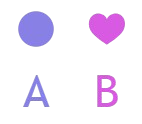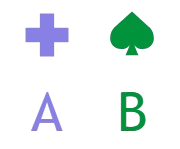Make a pattern
kEY NOTES :
Definition of a Pattern
- A pattern is a repeated sequence of objects, shapes, colors, or numbers.
- Examples include stripes on a zebra, tiles on a floor, or repeated claps and stomps in a rhythm.
Types of Patterns
- ABAB Pattern: Alternating two items (e.g., red, blue, red, blue).
- AABB Pattern: Grouping two of the same item together (e.g., red, red, blue, blue).
- ABC Pattern: Repeating a sequence of three different items (e.g., red, yellow, green).
Creating Patterns
- Use everyday objects like blocks, buttons, or toys to create patterns.
- Incorporate physical movements (e.g., clap, jump, clap, jump).
- Use drawing or coloring to make visual patterns.
Recognizing Patterns
- Identify patterns in the environment (e.g., patterns on clothing, in nature, or on buildings).
- Observe and describe what comes next in a given pattern.
Extending Patterns
- Practice predicting the next item in a sequence based on the existing pattern.
- Use questions like “What comes next?” or “What should we add here?”
Importance of Patterns
- Patterns help children develop critical thinking, logic, and sequencing skills.
- They form the foundation for understanding mathematical concepts like addition, subtraction, and multiplication.
Learn with an example
Use the shapes to continue the AB pattern.

The pattern starts with these two shapes:

You can use the letters A and B to label the shapes.

Repeat the two shapes to continue the AB pattern.

So, the AB pattern continues like this:

Use the shapes to continue the AB pattern.

The pattern starts with these two shapes:

You can use the letters A and B to label the shapes.

Repeat the two shapes to continue the AB pattern.

So, the AB pattern continues like this:

Let’s practice!

